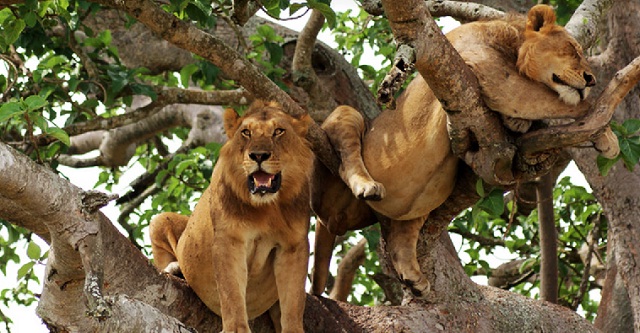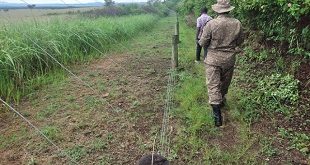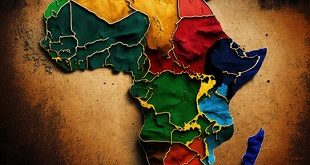
But lions are very adaptive animals. In Isasha, they form smaller prides; mainly because food is limited. The small prides, however, also mean that the QENP lions cannot hunt larger, more challenging prey. Although QENP has over 70 mammal species; including hippopotami, elephants, buffalo, and chimpanzees and monkeys, the lions in small prides cannot hunt them. They only depend on the Uganda kob and topis. But a robust trade in bush meat has also depleted the prey that the big cats depend on.
As a result, the lions have taken to the grassland and wooded grassland because that is where their main prey species, the Ugandan kob, is found. It is also the section of the park that is most encroached on by humans for farming, commercial hunting, and poaching. In other words, it is the frontline in the war between humans and beast in QENP.
In a major incident in late 2016, an elephant strayed from the park and destroyed cotton and maize gardens in Kihara village in Kasese town. When UWA was called in, the rangers fired volleys to scare the beast but it failed to return to the park. In the processes, however, two people were injured by stray bullets.
In 2011, a group called Ikongo Farmers Marketing and Processing Cooperative Society, sued UWA in the High Court over alleged negligence that allows animals, especially elephants to move from the park and destroy their property. They lost the case, as UWA pleaded for the right of the animals.
But as a policy to encourage area local governments to value wild life, the government ensures that 20% of revenue generated from collections to parks from tourists is distributed among districts that border the park. These include Kasese, Rubirizi, Kanungu, Ibanda, Mitooma, Rukungiri and Kamwenge districts. Kasese receives the most money because the park covers the biggest portion of it. Rubirizi follows. The two also have the largest human settlement adjacent to the park and are literally on the frontline in the fight between man and beast.
Geoffrey Baluku, the tourism consultant says conservation is about co-existence; people living around these parks are supposed to benefit from the park’s resources. When frontline communities start killing wildlife, then there is a problem.
 The Independent Uganda: You get the Truth we Pay the Price
The Independent Uganda: You get the Truth we Pay the Price




If UWA could compensate every damage within 6 days, there could be no conflict between man and beast. The UWA wants to eat a cake and still have it. All revenue from tourism in the park should be used to maintain the park and to pay for damages done by wildlife. Failure to pay for losses incurred means the farmer is left with no other option except to revenge.
In conclusion, these cats were killed by government.